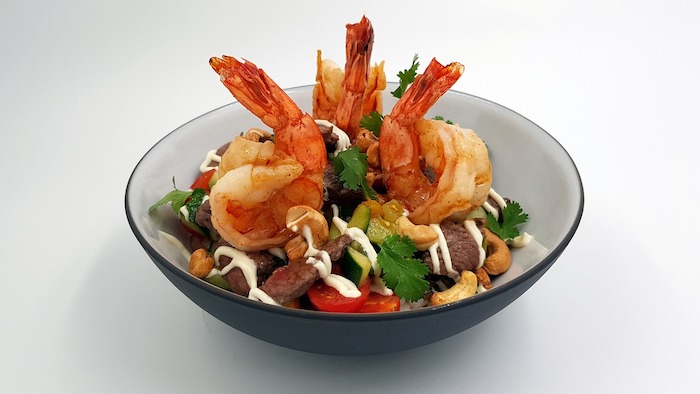
Ever dream of visiting Hawaii? If so, July 5 is National Hawaii Day. If you’re interested, you can book your ticket to fly to the island.
But did you also know that you may have eaten Hawaiian food? You may be surprised to hear that many Hawaiian dishes have become popular in metropolitan cities. Here are five of them:
1. Poke bowl
If you live in a big city like Toronto or New York City, you may have tried a poke bowl restaurant. Poke bowls have become popular over social media mainly because of its vibrant colors, flavors, and flexibility. The dish originated from the ancient times. Since oceans surround Hawaii is surrounded, the native Polynesians would prepare raw beef fish and season it with sea salt, ground candlenut, and seaweed. They would cut the fish and eat the dish as a snack.
Throughout colonization, sailors introduced salmon. When the Chinese and Japanese immigrated to Hawaii, they introduced soy sauce and sesame oil. However, no one officially named this seafood dish was until the late 1900s. At that time, people named it “Poke,” which means “to cut” in Hawaiian.
Now, poke bowls are a huge part of Hawaiian culture. Hawaiians would savor this dish in luauas and family festivals. The poke bowl symbolizes friendship and respect, uniting family members together.
2. Saimin
You’ve probably seen these noodle dishes around your city. Although they look similar to ramen and other East-Asian noodle dishes, Saimin originates from Hawaii.
The Chinese word “Sai” means thin, and “mein” means “noodle.” The dish dates back to the early 1900s during Hawaii’s plantation era. In the 1930s, the noodles became more popularized.
Similar to other Hawaiian food, Saimin is the result of Hawaii’s cultural melting pot. People continue to debate the exact cultural origins of saimin. If you want to try Saimin, you can find many food stands that sell them in Hawaii.
3. Spam musubi
Sushi lovers, the spam musubi may be your next favorite. Similar to sushi, the spam musubi contains rice and seaweed. But spam replaces the other raw fish and vegetables.
After World War II, the canned meat Spam became popular amongst Hawaiians. Nowadays, you can find this dish in school cafeterias, convenience stores, and local bake sales.
4. Macaroni salad
Do you like the macaroni salads that come with your KFC purchases? Hawaiian macaroni salad is flavorful and contains a hint of shun vinegar and mustard. You can also add your favorite vegetables including onions, carrots, and potatoes. Many also add white rice and salty meats to add a local touch.
European colonization introduced the macaroni salad to Hawaii. For food, the Europeans introduced dry elbow macaroni and mayonnaise to the Polynesians. The dish became popular in the 1980s. Now, it’s usually accompanied by a lunch plate.
5. Loco moco
If you desire a filling breakfast, try the loco moco This simple dish includes white rice, fried egg, brown gravy, and a burger on top. But there are plenty of other variations, too.
The original loco moco was said to be created in the town of Hilo in 1949. The story states that a group of teenagers were hungry and wanted an easy to savor dish that wasn’t a sandwich. A chef then combined a bowl of rice, a hamburger patty, and some brown gravy. The teenagers then named the dish “loco moco.” The name may have come from the word “loco,” which means razy in Hawaiian pidgin, and “moco” rhymes with “loco.”
If you see any of these dishes on social media, you now know that they’re from Hawaii. The Hawaiian food we know today is the result of a combination of culture and history, from both immigration and colonization. Nowadays, you can find plenty of good food with grilled and barbecue meats, and tropical fruits within the island.
Which of these dishes do you like the most? Let us know in the comments!
Image by Anna Jurt from Pixabay



















The Polynesians were introduced to mayonnaise and dry elbow macaroni by the Europeans. In the 1980s, the dish rose in popularity. Now, a lunch dish is typically included.